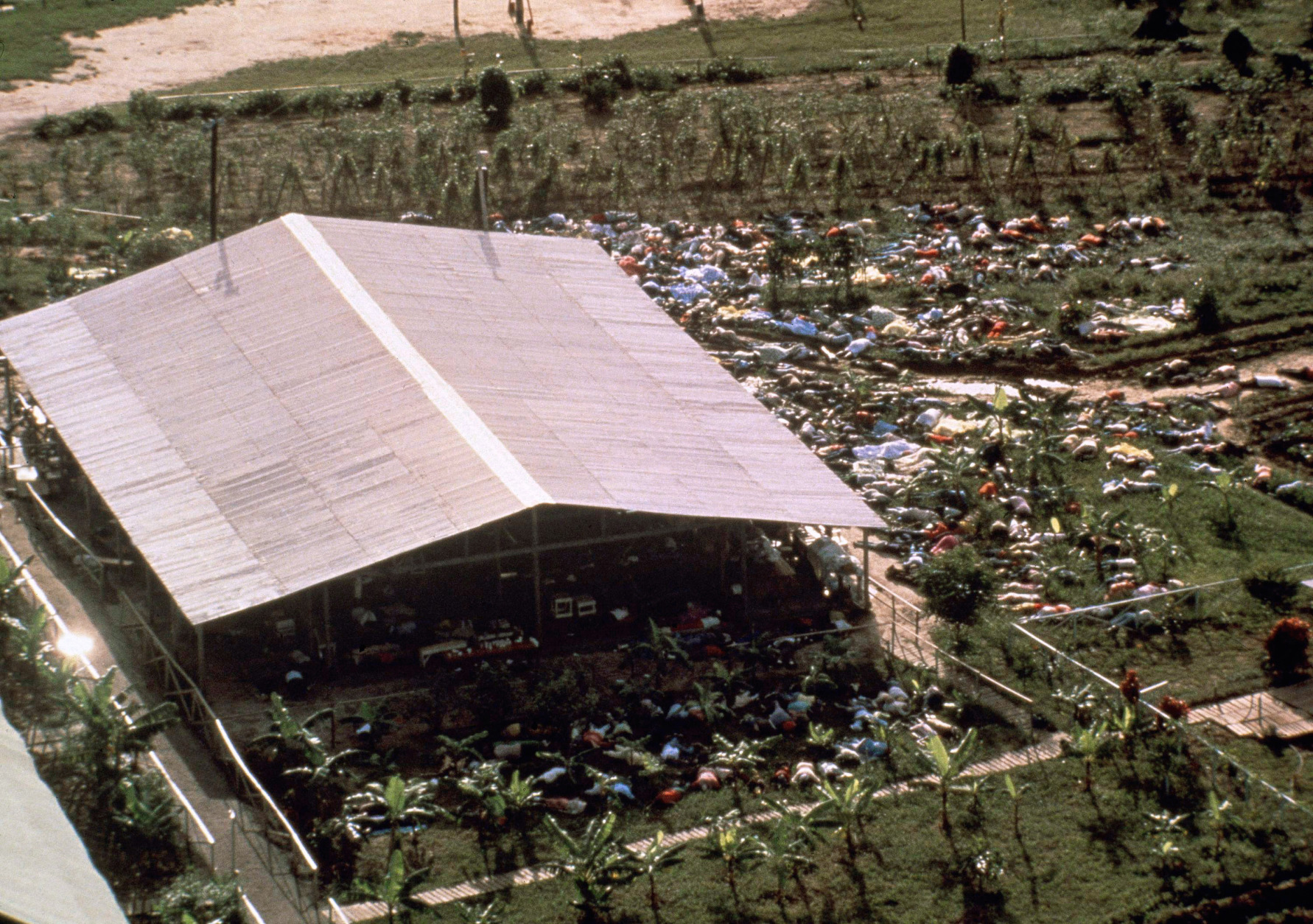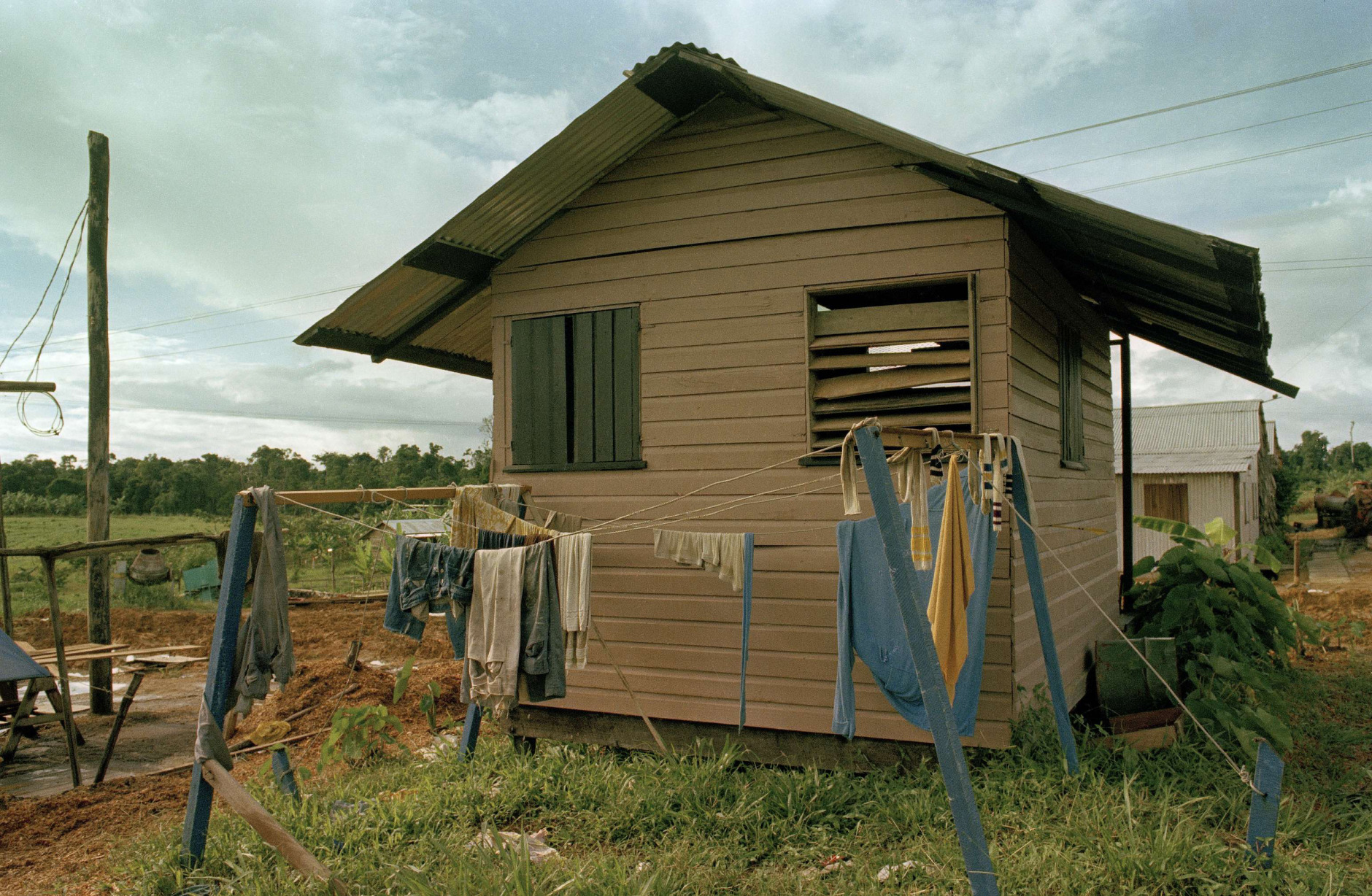How Many People Died In The Jonestown Massacre? Unveiling The Tragic Truth
The Jonestown massacre remains one of the darkest chapters in modern history, a chilling reminder of how far things can spiral out of control when trust, loyalty, and desperation mix with manipulation. If you're here, chances are you're trying to understand the scale of this tragedy. How many people died in the Jonestown massacre? That's the question we're diving into today. But this isn't just about numbers; it's about understanding the human cost and the lessons we can learn from this harrowing event.
This article will take you on a journey through the events that led to the massacre, the heartbreaking statistics, and the stories behind the victims. We'll explore why it happened, who was involved, and what the world learned from it. So buckle up, because this is more than just a history lesson—it's a deep dive into one of humanity's darkest moments.
Before we dive in, let me set the stage. The Jonestown massacre wasn't just a random event—it was the culmination of years of manipulation, cult-like behavior, and a toxic mix of ideology and paranoia. Understanding the "why" behind it all will help us grasp the "how many" part of the equation. Let's get started.
Table of Contents
- Introduction to Jonestown Massacre
- Background and Origins of Peoples Temple
- Key Players in the Tragedy
- How Many People Died in the Jonestown Massacre?
- The Methods Used in the Massacre
- The Aftermath and Global Impact
- Lessons Learned from Jonestown
- Psychology of Cults and Manipulation
- Statistical Breakdown of Victims
- Conclusion and Reflection
Introduction to Jonestown Massacre
The Jonestown massacre, which took place on November 18, 1978, is one of the most infamous events in American history. It was a mass murder-suicide orchestrated by the Peoples Temple, a cult led by the charismatic yet deeply troubled Jim Jones. The tragedy unfolded in a remote settlement in Guyana, where over 900 people lost their lives in a single day.
But what led to this catastrophic event? To understand the full scope of the tragedy, we need to look at the origins of the Peoples Temple, the leadership style of Jim Jones, and the societal factors that allowed such a group to gain so much influence. This wasn't just about a cult—it was about the vulnerabilities of human nature and the dangers of blind trust.
Background and Origins of Peoples Temple
Founded in the 1950s by Jim Jones, the Peoples Temple started as a small religious organization in Indiana. Initially, it focused on social justice and equality, attracting followers who were drawn to its progressive ideals. However, as time went on, Jones became increasingly authoritarian, using fear and manipulation to maintain control over his followers.
By the mid-1970s, the Peoples Temple had relocated to California, where it continued to grow in size and influence. But allegations of financial misconduct, abuse, and authoritarian practices began to surface, prompting some members to leave the group. This led Jones to move the cult to a remote jungle in Guyana, where he believed they could live free from outside interference.
Key Players in the Tragedy
While Jim Jones was the central figure in the Jonestown massacre, there were several other key players whose actions contributed to the tragedy. These included:
- Jim Jones: The charismatic leader of the Peoples Temple, whose manipulative tactics kept his followers under his control.
- Congressman Leo Ryan: A U.S. representative who visited Jonestown to investigate allegations of abuse and human rights violations. His visit would ultimately lead to the massacre.
- Survivors: A small number of people who managed to escape the tragedy, providing crucial testimonies about what happened that day.
How Many People Died in the Jonestown Massacre?
The official death toll of the Jonestown massacre stands at 918 people, including over 300 children. This makes it one of the largest mass casualties in modern history. The victims included men, women, and children from all walks of life, many of whom had been drawn to the Peoples Temple's promise of equality and social justice.
But the number alone doesn't tell the full story. Each of those 918 lives had a story, a family, and a future that was cruelly cut short. The tragedy wasn't just about the scale of the loss—it was about the human cost, the shattered dreams, and the families left behind to pick up the pieces.
The Methods Used in the Massacre
The method used in the Jonestown massacre was chillingly systematic. Members were instructed to drink a mixture of cyanide, sedatives, and powdered drink mix, which was laced with poison. For those who resisted, force was used to ensure compliance. The youngest victims, including infants, were fed the poison by their parents, who believed they were doing the right thing.
It's hard to comprehend the level of manipulation and fear that led so many people to willingly participate in their own deaths. But that's the power of cult mentality—once you're in, it's incredibly difficult to see the truth from the lies.
The Aftermath and Global Impact
In the wake of the Jonestown massacre, the world was left reeling. The tragedy sparked widespread debate about the dangers of cults and the importance of protecting vulnerable populations from manipulation and abuse. It also led to increased scrutiny of religious organizations and the need for greater transparency and accountability.
For the families of the victims, the aftermath was a mix of grief, anger, and confusion. Many struggled to understand how their loved ones could have been part of such a destructive organization. The tragedy also had a profound impact on Guyana, where the massacre took place, leaving deep scars on the local community.
Lessons Learned from Jonestown
The Jonestown massacre serves as a powerful reminder of the dangers of blind trust and the importance of critical thinking. It highlights the need for individuals to question authority, seek out diverse perspectives, and resist the allure of simplistic solutions to complex problems.
One of the key lessons from Jonestown is the importance of recognizing the warning signs of cult-like behavior. These include:
- Charismatic leadership that demands absolute loyalty.
- Isolation from outside influences and critical feedback.
- Use of fear and manipulation to maintain control.
- Suppression of dissenting voices and independent thought.
Psychology of Cults and Manipulation
To truly understand the Jonestown massacre, we need to delve into the psychology of cults and the mechanisms of manipulation. Cults often exploit people's vulnerabilities, offering them a sense of belonging, purpose, and security in exchange for their loyalty and obedience.
Jim Jones was a master manipulator who used a combination of charm, intimidation, and psychological tactics to control his followers. He created an environment where dissent was not tolerated, and where fear of punishment was a constant presence. This allowed him to maintain his grip on power, even as the situation spiraled out of control.
Statistical Breakdown of Victims
Breaking down the statistics of the Jonestown massacre provides a clearer picture of the tragedy's impact. Here are some key figures:
- Total number of victims: 918
- Number of children: Over 300
- Number of men: Approximately 300
- Number of women: Approximately 300
- Age range: From infants to elderly individuals
These numbers are more than just statistics—they represent lives lost, families torn apart, and dreams shattered. The tragedy of Jonestown is a stark reminder of the fragility of human life and the importance of protecting those who are most vulnerable.
Conclusion and Reflection
The Jonestown massacre was a tragedy of unimaginable proportions, one that continues to haunt us to this day. The question "how many people died in the Jonestown massacre?" is more than just a statistical inquiry—it's a call to action to learn from the past and prevent similar tragedies from happening in the future.
As we reflect on the events of that fateful day, let's remember the lessons we've learned. Let's strive to foster environments where critical thinking is encouraged, where dissenting voices are heard, and where individuals are empowered to question authority. And let's honor the memory of those who lost their lives by working towards a world where such tragedies are a thing of the past.
So, what can you do? Share this article, start conversations, and educate others about the dangers of cults and the importance of critical thinking. Together, we can create a world where the lessons of Jonestown are not forgotten.



Detail Author:
- Name : Mr. Elwyn Fay
- Username : leffler.dolly
- Email : abernathy.waylon@hotmail.com
- Birthdate : 2005-10-19
- Address : 78455 Clyde Passage North Agnes, IA 16890
- Phone : 864-579-2179
- Company : Nienow, Franecki and Kiehn
- Job : Account Manager
- Bio : Commodi mollitia sit facere hic aut alias molestias. Et sunt modi et unde et sed.
Socials
tiktok:
- url : https://tiktok.com/@hhills
- username : hhills
- bio : Voluptatum inventore molestiae ullam rem voluptate possimus.
- followers : 3582
- following : 1434
twitter:
- url : https://twitter.com/hhills
- username : hhills
- bio : Tempore voluptatem porro accusantium. Soluta molestiae autem placeat ducimus magni eum. Voluptatem sit quae omnis eos deserunt. Ut voluptatem ut velit.
- followers : 2247
- following : 1147
linkedin:
- url : https://linkedin.com/in/hailee.hills
- username : hailee.hills
- bio : Dolor rerum et delectus voluptatem.
- followers : 3774
- following : 1788